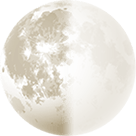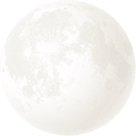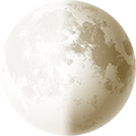July Night Sky Astronomy (2023)What to see in July's night sky including Moon phases, a supermoon, planet guide, Delta Aquarid meteor shower and July Deep Space Objects including The Eagle Nebula (M16).
July Moon Phases
July's full moon was known by early Native American tribes as the Buck Moon because the male buck deer would begin to grow their new antlers at this time of year. This moon has also been known as the Thunder Moon and the Hay Moon.
Full Moon and New Moon for July 2023

July 2023 Full MoonThu 1st Jan

July 2023 Last QuarterMon 10th Jul

July 2023 New MoonTue 18th Jul

July 2023 First QuarterWed 26th Jul
July 3rd is the full moon Supermoon. This is the first of four supermoons in 2023 when the Moon is closer to the Earth and will appear bigger and brighter.
Comet C/2020 V2 ZTF
Comet C/2020 V2 ZTF is one to keep an eye out for as it should be visible during July.
Currently, comet C/2020 V2 ZTF can be seen in the early morning skies using a telescope or a pair of powerful binoculars.
In the beginning of July 2023 it is close to Uranus, but it may be difficult to spot due to the bright post-solstice sky. As the month progresses, the comet slowly moves south to close out the month to the east of the skewed pentagonal shape that represents Cetus, the whale.
July Planets
Venus and Mars are slowly drawing together and after sunset, you can see both to the west and will appear in the same field of view with binoculars. Between the 9th and 12th you can see Venus, Mars and Regulus together in the same binocular field of view.
Saturn is visible in the mornings from late January to early July, and then in the evenings from July to December.
July Meteor Showers
The Delta Aquarids is an average shower that can produce up to 20 meteors per hour at its peak. It is produced by debris left behind by comets Marsden and Kracht. The shower runs annually from July 12 to August 23. It peaks this year on the night of July 28 and the morning of July 29. A near-full moon this night will unfortunately block most of the meteors. The best viewing will be from a dark location after midnight. Meteors will radiate from the constellation Aquarius, but can appear anywhere in the sky.

July Deep Space Objects
Summer can be a wonderful time for stargazing and despite the light evenings, there's much to be seen in the night sky at this time of year.
The first stunning summer deep-sky object is the rather large summer Milky Way in Sagittarius, Scutum, Ophiuchus and Aquila. It is a particularly awe-inspiring sight, especially from dark sky sites. To get a good view of it from the UK it is best to travel to a site with a very clear southern horizon.
Nestled within the Milky Way in the constellation of Sagittarius, just above the spout of the Teapot asterism, you'll find the Lagoon Nebula (M8). It's a great object to look at with binoculars and even better in a small telescope.
About 7° to the East of the Lagoon Nebula lies the magnificent globular cluster of M22. You shouldn't have too much trouble picking it out using binoculars, but for a real WOW, try observing it with a large telescope to see it sitting against the glittering starfields of the Galaxy.
There are several other striking summer nebulae in this region of the sky. The Eagle Nebula (M16) and M17 are excellent targets for 6 to 8-inch reflectors; located in Serpens and Sagittarius respectively. Not far away in Scutum lies the Wild Duck Cluster, M11.








